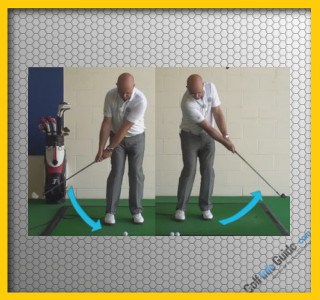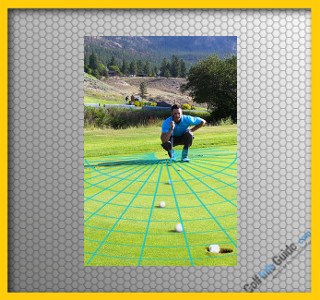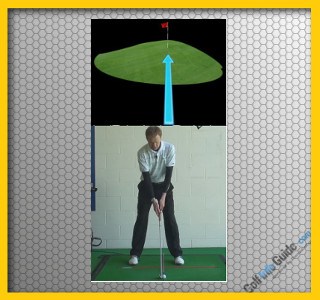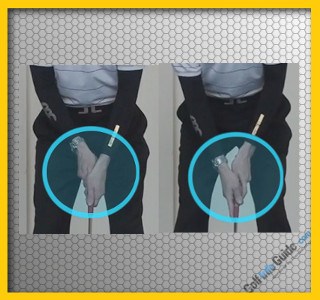- Which club should I use to hit chip shots? As you might imagine, the answer to this question is going to depend on the shot at hand. For a basic chip shot from a good lie, using a pitching wedge is a great place to start. Once you gain some experience, you will find that you can move up or down from a pitching wedge depending on the type of shot you wish to produce. For instance, if you want to hit a higher shot with less roll, using a sand wedge or a lob wedge will be the right call. On the other hand, if you wish to play a low shot with lots of roll, you can move down to a six or seven iron. Ideally, you will be comfortable using a variety of clubs in the short game, so you are always able to handle the challenges that come your way.
- How do I read greens? Learning how to read greens properly is one of the biggest challenges faced by beginning golfers. In fact, there are plenty of experienced golfers who have never learned how to read their putts with any degree of success. The first thing to know about reading greens is that you need to read both the side-to-side break as well as the change in elevation. Is the putt going uphill or downhill? Never forget about this important piece of the puzzle. Also, if you are going to improve your green reading, you need to practice it just like any other part of your game. Read your putts in practice and compare your read to the actual result of the putt. Over time, this kind of focused practice will lead to improved results.
- Should I leave the pin in, or take it out? This is one of the age-old debates in golf. Some golfers think that you should always take the pin out of the hole when chipping, while others think you should always leave it in. The correct approach is somewhere between those two extremes. As a good rule of thumb, make your decision on the pin based on your expectations for the shot. If you think that you will be able to control the speed of your chip shot easily – such as on an uphill chip – it is best to take the pin out. On the other hand, if you are facing a quick chip which might get away from you, leave it in for use as a potential backstop. Basically, you want to leave it in if you think it might help you, and take it out when it is going to do more harm than good.
- What is the right grip to use when putting? There is no ‘correct’ grip to use when putting, as there are many different ways to get the job done. Some golfers like to use a grip which is similar to the grip they use for a full swing, while others like to go in a completely different direction. For example, the cross-handed grip is quite popular on the greens, as it can help you stabilize the putter throughout the stroke. The key here is to experiment with various grips in practice until you find one that suits your needs. Once you do find a grip that makes you comfortable, stick with it over the long run. Switching back and forth between grips is a sure way to wind up with inconsistent results from round to round.
Moving closer to the green, we are going to now take a look at some common short game questions. If you are serious about shaving strokes from your average score as soon as possible, this is really where you should start. The short game offers a tremendous opportunity for improvement, but only if you are willing to work at it.
Let’s review questions and answers related to some popular short game topics.




Too many amateur golfers neglect the short game, and their lack of effort in this area shows on the course. Don’t put yourself in that category. By giving your short game the time and attention it deserves, you may be able to cut multiple strokes from your average score in short order.




